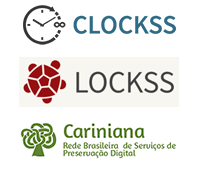Cultural acclimatization in Rural Education at FURG: permanence as a right among indigenous and quilombola students
DOI:
https://doi.org/10.20873/uft.rbec.e15247Abstract
ABSTRACT. This study analyzes the material culture produced by indigenous and quilombola students at the Federal University of Rio Grande – FURG within the scope of the Pedagogical Support Program for Indigenous and Quilombola Students – APEIQ, promoted by the Pro-Rectory of Student Affairs – PRAE. The objective of this study is to understand the relationships between material culture and the forms of representation of being and etnicity at the university, particularly with regard to the maintenance of their ways of life in the academic space. The method applied was the dialogical heritage education in which reflections on cultural paradigms promote the teaching of non-formal and informal History, in a democratic and participatory way. Activities were identified at FURG that seek to embrace traditional ways of life. The stencil, painting, ceramics and crafts workshops produced significant material culture of an ethnological matrix that represent the permanence of indigenous and quilombola ways of life in the academic space. This cultural material was classified, analyzed and understood as a way for ethnic groups to domesticate the academic space, making it culturally familiar.
Downloads
References
Bhabha, H. (2005). O local da cultura. Belo Horizonte: Editora UFMG.
Barth, F. (1997). Grupos étnicos e suas fronteiras. In Poutignat, P., & Streiff-Fenart, J. (Orgs.). Teorias da etnicidade (pp. 185-227). S./Ed.
De Andrade, F. M. R., & Nogueira, L. P. M. (2023). Formação de educadores do campo: questões indígenas e decolonialidade. Revista Internacional de Educação Superior, 10, e024010-e024010.
Demarchi, J. L (2016). Perspectivas para atuação em educação patrimonial. Revista CPC, [S. l.], 22, 267-291. https://doi.org/10.11606/issn.1980-4466.v0i22p267-291
Fonseca, E. R., Pestana, M. B., & Funk, T (2020). As folhas sagradas de Ossaim: Agroecologia quilombola no Rio Grande do Sul, Brasil. Cadernos de Agroecologia, 15(2), s./p.
Florêncio, S. R. R. (2012). Educação Patrimonial: um processo de mediação. In Tolentino, A. B. (Org.). Educação Patrimonial: reflexões e práticas (s./p.). João Pessoa: IPHAN-PB (Caderno Temático 2).
Kawakami, É. A. (2019). Currículo, ruídos e contestações: os povos indígenas na universidade. Revista Brasileira De Educação, 24, e240006. https://doi.org/10.1590/S1413-24782019240006
Martí, J. (2004). O campo da Educação do Campo. Por uma educação do campo: contribuições para a construção de um projeto de educação do campo. Brasília. Recuperado de: https://www2.fct.unesp.br/nera/publicacoes/ArtigoMonicaBernardoEC5.pdf Acesso: 29 nov. 2022.
Molina, M. (Org.). (2004). Por uma Educação do Campo. Petrópolis, RJ: Vozes.
Pestana, M. B., & Da Silva, L. H. C. (2018). Ñaeú Petynguá–que treco é esse? Revista Memorare, 5(3), 15-25. Recuperado de: https://portaldeperiodicos.animaeducacao.com.br/index.php/memorare_grupep/article/view/7331 Acesso 22 nov 2022.
Pestana, M. B., Fonseca, É. R., & Funk, T. R. (2022). As quatro pedras de Xangô: educação patrimonial dos Quilombos agroecológicos de São Lourenço do Sul, RS. Tessituras: Revista de Antropologia e Arqueologia, 10(1), 417-428. Recuperado de: https://revistas.ufpel.edu.br/index.php/tessituras/article/view/2894
Sahlins, M. (1997). O pessimismo sentimental e a experiência etnográfica: por que a cultura não é um objeto em via de extinção (parte 1). Mana, 3(1), 41-73. Recuperado de: https://doi.org/10.1590/S0104-93131997000200004
Silva, M. R. (2017). Educação do campo e indígena: uma análise nos livros didáticos das escolas do/no campo. Departamento de Educação do Campo (DEC), do Centro de Educação da UFPB.
Published
How to Cite
Issue
Section
License
Copyright (c) 2023 Marlon Borges Pestana

This work is licensed under a Creative Commons Attribution 4.0 International License.
Proposal for Copyright Notice Creative Commons
1. Policy Proposal to Open Access Journals
Authors who publish with this journal agree to the following terms:
A. Authors retain copyright and grant the journal right of first publication with the work simultaneously licensed under the Creative Commons Attribution License that allows sharing the work with recognition of its initial publication in this journal.
B. Authors are able to take on additional contracts separately, non-exclusive distribution of the version of the paper published in this journal (ex .: publish in institutional repository or as a book), with an acknowledgment of its initial publication in this journal.
C. Authors are permitted and encouraged to post their work online (eg .: in institutional repositories or on their website) at any point before or during the editorial process, as it can lead to productive exchanges, as well as increase the impact and the citation of published work (See the Effect of Open Access).















